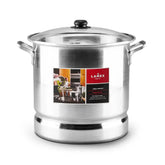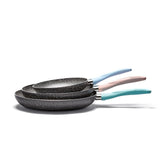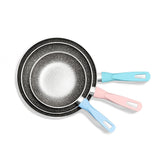3 elements that cannot be missing from your Day of the Dead offering
by
David Zamorano
25 Oct 2018
In Mexico, we have a tradition, unique in the world, that distinguishes and identifies us throughout the planet: the Day of the Dead. It has been celebrated since time immemorial, and each region of the country has its own unique character. Today, Mexican families continue to pay tribute to the memory of their departed loved ones, remembering them with affection and offering them a loving offering.
Each family personalizes their offering with a little bit of food that the deceased loved and elements that remind us of those who have passed away. The types of offerings are very broad, and each person decides what is and isn't included in the offering. There are many elements that can be found in an offering, but there are some essential ones that, to comply with tradition, must be included in every offering of the Dead. Here are three of them:
1. Papel picado:
 The use of paper in religious festivals dates back to pre-Hispanic Mexico. The Aztecs used tree bark to make a type of rough paper called amatl, which was used to make flags and decorative elements for temples, streets, homes, and fields. Today, it continues to be produced by artisans who have learned this technique, passed down from generation to generation.
The use of paper in religious festivals dates back to pre-Hispanic Mexico. The Aztecs used tree bark to make a type of rough paper called amatl, which was used to make flags and decorative elements for temples, streets, homes, and fields. Today, it continues to be produced by artisans who have learned this technique, passed down from generation to generation.
The design can include figures such as flowers, foliage, birds, angels, crosses, skeletons, and historical figures, as well as words or phrases. The edges can be straight, wavy, zigzag, or fringed. Each design is a unique and complex work of art that requires great skill.
2. Marigold flowers
 Its use in this festival also has pre-Hispanic origins. According to Aztec tradition, the yellow of this flower evokes the sun, and both its color and aroma serve to guide the souls of the deceased. In fact, today, in many offerings, petals of this flower are used to form a path from the door to the offering, marking the way for the souls who visit us.
Its use in this festival also has pre-Hispanic origins. According to Aztec tradition, the yellow of this flower evokes the sun, and both its color and aroma serve to guide the souls of the deceased. In fact, today, in many offerings, petals of this flower are used to form a path from the door to the offering, marking the way for the souls who visit us.
3. Candles, votive candles, tapers

The ancient Mexicans used pine bark or slivers instead of the candles we use today. According to tradition, the souls of the deceased need light as a guide to come to this world and return to their abode. In some indigenous communities, one candle is used for each deceased; that is, the number of candles on the altar depends on the number of souls the family wishes to receive. The candles are generally white, but some people use purple tapers or candles as a sign of mourning; and if four of these are arranged in a cross, they represent the four cardinal points, so that the soul can orient itself until it finds its way and its home.
And you, have you made your offering yet? What are the essential elements for you? How do you celebrate this tradition? Tell us!
With information from:
Source 1
Source 2
Source 3
Each family personalizes their offering with a little bit of food that the deceased loved and elements that remind us of those who have passed away. The types of offerings are very broad, and each person decides what is and isn't included in the offering. There are many elements that can be found in an offering, but there are some essential ones that, to comply with tradition, must be included in every offering of the Dead. Here are three of them:
1. Papel picado:
 The use of paper in religious festivals dates back to pre-Hispanic Mexico. The Aztecs used tree bark to make a type of rough paper called amatl, which was used to make flags and decorative elements for temples, streets, homes, and fields. Today, it continues to be produced by artisans who have learned this technique, passed down from generation to generation.
The use of paper in religious festivals dates back to pre-Hispanic Mexico. The Aztecs used tree bark to make a type of rough paper called amatl, which was used to make flags and decorative elements for temples, streets, homes, and fields. Today, it continues to be produced by artisans who have learned this technique, passed down from generation to generation.The design can include figures such as flowers, foliage, birds, angels, crosses, skeletons, and historical figures, as well as words or phrases. The edges can be straight, wavy, zigzag, or fringed. Each design is a unique and complex work of art that requires great skill.
2. Marigold flowers
 Its use in this festival also has pre-Hispanic origins. According to Aztec tradition, the yellow of this flower evokes the sun, and both its color and aroma serve to guide the souls of the deceased. In fact, today, in many offerings, petals of this flower are used to form a path from the door to the offering, marking the way for the souls who visit us.
Its use in this festival also has pre-Hispanic origins. According to Aztec tradition, the yellow of this flower evokes the sun, and both its color and aroma serve to guide the souls of the deceased. In fact, today, in many offerings, petals of this flower are used to form a path from the door to the offering, marking the way for the souls who visit us.3. Candles, votive candles, tapers

The ancient Mexicans used pine bark or slivers instead of the candles we use today. According to tradition, the souls of the deceased need light as a guide to come to this world and return to their abode. In some indigenous communities, one candle is used for each deceased; that is, the number of candles on the altar depends on the number of souls the family wishes to receive. The candles are generally white, but some people use purple tapers or candles as a sign of mourning; and if four of these are arranged in a cross, they represent the four cardinal points, so that the soul can orient itself until it finds its way and its home.
And you, have you made your offering yet? What are the essential elements for you? How do you celebrate this tradition? Tell us!
With information from:
Source 1
Source 2
Source 3
Sample Block Quote
Praesent vestibulum congue tellus at fringilla. Curabitur vitae semper sem, eu convallis est. Cras felis nunc commodo eu convallis vitae interdum non nisl. Maecenas ac est sit amet augue pharetra convallis.
Sample Paragraph Text
Praesent vestibulum congue tellus at fringilla. Curabitur vitae semper sem, eu convallis est. Cras felis nunc commodo eu convallis vitae interdum non nisl. Maecenas ac est sit amet augue pharetra convallis nec danos dui. Cras suscipit quam et turpis eleifend vitae malesuada magna congue. Damus id ullamcorper neque. Sed vitae mi a mi pretium aliquet ac sed elitos. Pellentesque nulla eros accumsan quis justo at tincidunt lobortis deli denimes, suspendisse vestibulum lectus in lectus volutpate.




